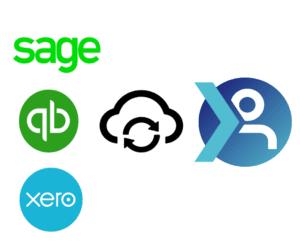The Ultimate Guide to Building a Customer-Centric Strategy that Drives Business Success
Published on 11 December 2023 by Chris Cox
In today’s competitive business landscape, customer centricity has become a crucial strategy for companies to thrive. A customer-centric approach focuses on putting the customer at the core of the business, providing a positive experience throughout the customer journey. This article will guide you on how to create a customer-centric strategy for your business, highlighting the role of CRM (Customer Relationship Management) in achieving this goal.
Understanding Customer-Centricity
Customer-centricity is a business framework that prioritises the customer’s needs and preferences at every stage of the customer journey. It involves aligning all aspects of the business, from marketing and sales to customer service and support, to create a seamless and personalised experience for the customer. The goal is to build strong customer relationships, enhance loyalty, and drive business growth.
The Importance of Customer Centricity
Customer-centricity is vital for the success and sustainability of any business. By focusing on the customer, companies can drive repeat business, enhance customer loyalty, and increase overall customer satisfaction. According to research by Deloitte and Touche, customer-centric companies are 60% more profitable than those that are not focused on the customer. Moreover, 90% of companies compete solely on the basis of customer experience, highlighting the significance of providing a positive customer journey.
Challenges in Becoming Customer-Centric
While the benefits of customer-centricity are clear, implementing a customer-centric strategy is not without its challenges. The power shift between brands and customers, fuelled by social media and increased customer selectivity, has made it imperative for companies to prioritize customer needs. However, many companies struggle to become truly customer-centric due to a lack of aligned culture, inefficient communication across departments, and an inability to anticipate and meet customer expectations.
Best Practices for Creating a Customer-Centric Company
To become a customer-centric company, certain best practices can guide your journey. These practices include:
1. Hiring for customer success
Building a customer-centric culture starts with hiring employees who are aligned with the importance of customer experience. Focus on hiring talent that understands the value of customer-centric thinking and can contribute to providing exceptional customer service at every touchpoint.
2. Putting relationships first
Customers are not just numbers; they are people who benefit greatly from establishing mutually beneficial relationships. Prioritise building strong connections with customers and understand their needs and preferences to provide personalised experiences.
3. Democratising customer data
Centralise customer data and insights through a CRM system to gain a comprehensive view of each customer. Leverage this data to understand customer behaviour, interests, and engagement, and use it to create targeted products, services, and promotions.
4. Connecting company culture to customer outcomes
Motivate employees by linking their actions to customer-centric outcomes. For example, recognise and celebrate successful strategies that reduce customer wait times or make interactions easier for customers. This alignment will drive a customer-focused culture throughout the organisation.
5. Defining your CX strategy
Develop a customer experience (CX) strategy that aligns with your brand and business strategy. Clearly define what customers expect from your brand and how you will meet those expectations. This strategy should encompass all touchpoints, from initial discovery to post-purchase support.
Measuring the Success of a Customer-Centric Company
Measuring the success of a customer-centric company requires tracking key metrics that reflect customer satisfaction and loyalty. Three important metrics to consider are:
1. Churn rate
Churn rate measures the percentage of customers who leave your company within a given period. Acquiring new customers can be costly, so reducing churn by focusing on customer retention is crucial. By analysing the reasons for customer churn, such as poor customer service or lack of rewards for loyalty, you can implement strategies to improve retention rates.
2. Net Promoter Score (NPS)
NPS measures customer loyalty and satisfaction by asking customers a single question: “On a scale of 0-10, how likely are you to recommend our company to a friend or colleague?” Promoters are those who rate your company 9-10, indicating high satisfaction and loyalty. Passives are those who rate your company 7-8, and detractors are those who rate it 0-6. By tracking NPS, you can gauge customer sentiment and identify areas for improvement.
3. Customer lifetime value (CLV)
CLV measures the total revenue a customer generates for your business over their entire relationship with your company. By calculating CLV, you can understand the value of long-term customer relationships and make informed decisions about investing in customer retention and loyalty initiatives.
The Role of CRM in Customer-Centricity
CRM software plays a crucial role in enabling and supporting a customer-centric strategy. By implementing a CRM system, you can centralise customer data, streamline communication across departments, and provide a seamless customer experience. Here are some key ways CRM enhances customer-centricity:
1. Integration with ERP systems
Integrating CRM with ERP (Enterprise Resource Planning) systems, such as finance software like Sage 50, Sage 200, or Xero, allows for efficient order management and real-time data synchronization. This integration eliminates the need to switch between systems, streamlining processes and improving efficiency.
2. Proactive customer service and automation
CRM software enables proactive customer service by providing resources for customers to solve their own problems, reducing the need for support calls. Automation features within CRM streamline processes like quote generation, order management, and invoicing, saving time and improving customer service levels.
3. Collecting customer feedback and anticipating needs
CRM systems facilitate the collection of customer feedback through various channels, including chat, email, SMS, and phone calls. By listening to customer feedback and integrating it into the CRM system, you can anticipate customer needs and make informed decisions about product development and customer service improvements.
4. Building a customer-centric culture
CRM software helps foster a customer-centric culture by providing a centralised platform for all customer-related activities. It enables teams to collaborate and share customer insights, ensuring everyone is aligned with the goal of providing exceptional customer experiences.
Integrating CRM and ERP for Efficiency
Integrating CRM and ERP systems is essential for achieving operational efficiency and customer-centricity. By connecting these systems, you can streamline processes, eliminate duplicate tasks, and ensure real-time data synchronization. For example, Xapsys CRM simplifies managing customer relationships by integrating with ERP finance systems like Sage 50, Sage 200, and Xero. This integration allows for the management of contacts, leads, sales cycles, prospects, and customer data in one place, providing SMEs with a comprehensive CRM solution.
Proactive Customer Service and Automation
One of the best ways to differentiate your business and provide added value to customers is through proactive customer service. By offering resources and self-service options, you empower customers to resolve their own issues, reducing the need for support calls and improving overall customer satisfaction. CRM software with automation features further enhances customer service by automating processes like appointment scheduling, task organisation, and email integration. These features save time, increase efficiency, and enable personalised communication with customers.
Collecting Customer Feedback and Anticipating Needs
Partnering with well known review platforms such as reviews.io and trustpilot can boost trust signals and SEO performance however, collecting customer feedback is also crucial for understanding their needs and preferences. CRM systems provide channels for customer communication, such as chat, email, and phone calls, allowing you to gather valuable insights. Additionally, conducting surveys, user testing, and making direct calls can provide qualitative feedback that helps validate assumptions and guide decision-making. By actively listening to customers and anticipating their needs, you can tailor your products, services, and marketing efforts to meet their expectations.
Building a Customer-Centric Culture
Building a customer-centric culture starts with making customer success a core value of your organisation. By emphasising the importance of customer experience and aligning all employees with this goal, you create a culture that prioritizes customer needs. This includes hiring employees who understand the value of customer-centric thinking, putting relationships first, democratising customer data, and connecting company culture to customer outcomes. By consistently focusing on what customers need and delivering a positive experience, you can create a customer-centric organisation.
Conclusion
Creating a customer-centric strategy is essential for businesses looking to thrive in today’s competitive landscape. By understanding the importance of customer centricity, overcoming challenges, and implementing best practices, you can build a customer-centric company that drives repeat business, enhances customer loyalty, and improves overall business growth. CRM software plays a crucial role in enabling customer-centricity by centralising customer data, streamlining processes, and facilitating proactive customer service. By integrating CRM and ERP systems, automating processes, collecting customer feedback, and fostering a customer-centric culture, you can create a business that exceeds customer expectations and achieves long-term success.


